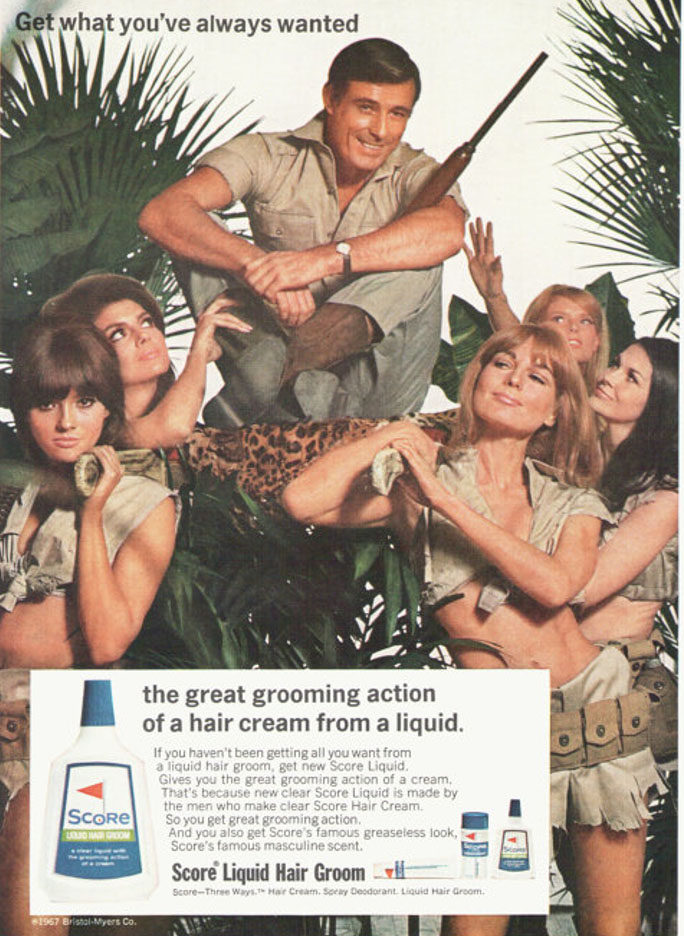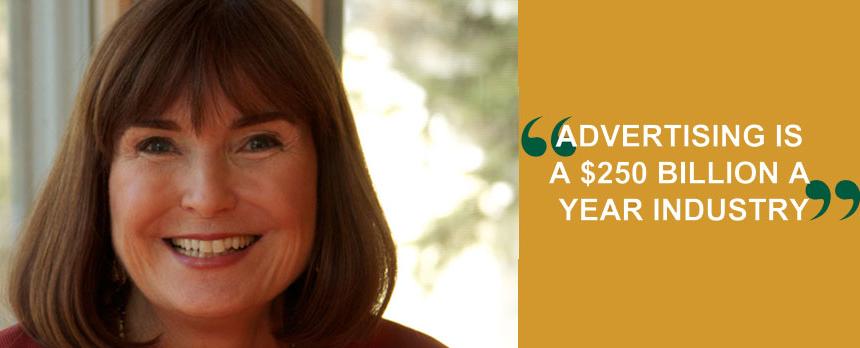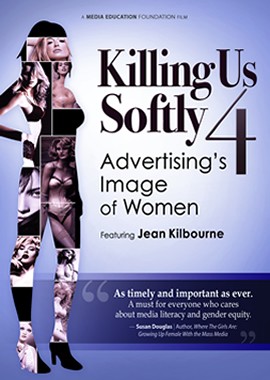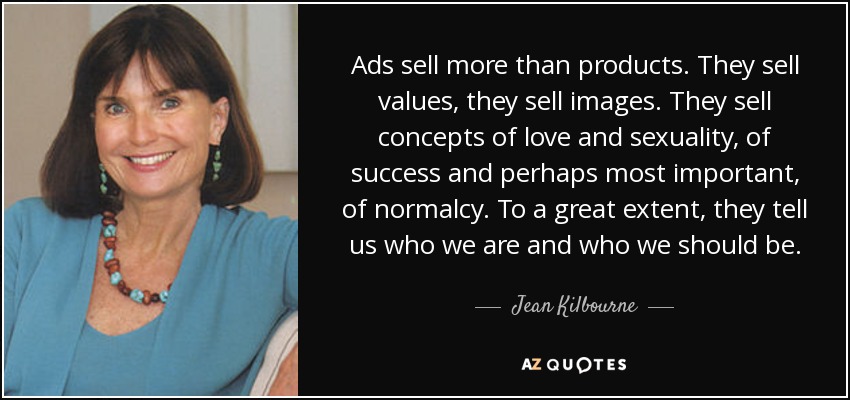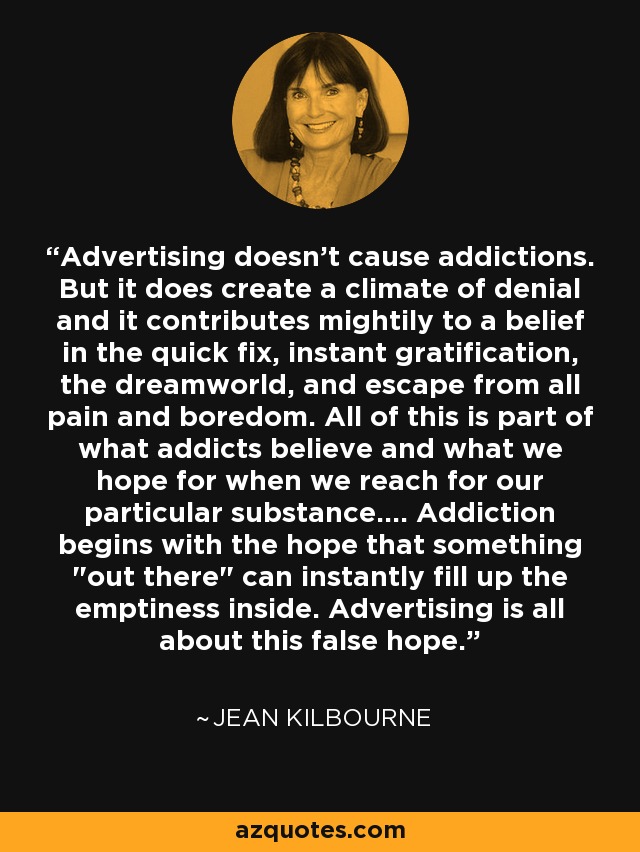Media Language –
Mise-en-scene – ‘Mise en scene is the arrangement of scenery and stage properties in a play. Translated from French, it means “setting the stage” but, in film analysis, the term mise en scene refers to everything in front of the camera, including the set design, lighting, and actors’
The use of props such as the outfits, the gun, the trees and the animal skin in combination with the stances of the women and the higher positioning of the male all force the audience to believe that this product is able to give uses this form of superiority and dominating or dangerous power.
Language Analysis – Semantic field of masculinity – ‘Men’ ‘Masculine’ ‘Scent’ ‘Groom’, almost animal like. Also use of repetition in order to reinforce the product and force readers to think about it.
Production values and Aesthetics – ‘Exotic’/ ‘Tropical’ aesthetic reinforces the idea of animal like behaviour. The use of the ‘adventure-esq’ outfits is used to reinforce the language used, referring to adventure and animal like behaviour as well as more glorifying more ‘exotic’ cultures that contrast to Western societies.
Semiotics: how images signify cultural meanings – Could be interpreted as a form of cultural appropriation. The outfits resemble that of famous adventurers such as Indiana Jones, it also uses a similar technique used towards Lara Croft in Tomb Raider as the females outfits are short and easily sexualised in order to suit and capture a stereotypical male Gaze.
How advertising conventions are socially and historically relative – In contrast to more modern social norms and dominant ideologies, this piece may be viewed as quite sexist as it glorifies women’s bodies purely for male satisfaction and benefit.
The way in which media language incorporates viewpoints and ideologies – Laura Mulvey – Male Gaze Theory
Narrative –
How does Score construct a narrative which appeals to its target audience – Takes the POV of a Male gaze, sexualising women and giving the ONLY male in the ad power and domination, represented through ‘animal’ like semiotics to describe the product he is using as well as his overall positioning in the shot.
How and why audience responses to the narrative of this advert may have changed over time – Social norms, dominant ideologies as well popular political opinions vary and change within cultures over time, following popular norms or as a way to adapt to an adjusted socio-economic climate. When this ad was created in 1967, ideas on the role of women were very different to now, women were seen more as objects that were disposable to men rather than independent individuals with the same capabilities as men.
How does this advert create desire for the product – This product has a target audience of adult men, therefore the representation of loads of women seemingly inferior to the ONLY male in the ad allows for the target audience to believe that this product may bring them some form of sexual gratification.
Techniques of Persuasion –
- Representation of Women
- Figurative Language techniques – repetition/ Semantic Fields
- Cultural appropriation – suggests exotic product
- Weapon – signifies power and authority
- Higher positioning of Man – Also to signify dominance and power of men (in society too)
- Heteronormativity – ‘the belief that heterosexuality, predicated on the gender binary, is the default, preferred, or normal mode of sexual orientation. It assumes that sexual and marital relations are most fitting between people of opposite sex.’
Students should be able to demonstrate knowledge and understanding of the persuasive techniques used in the advert and issues surrounding brand values, brand message, brand personality and brand positioning should inform the analysis
Media Representation –
Representation of Gender –
The processes which lead media producers to make choices about how to represent social groups – in terms of a late 1960s perspective, the representation of social groups, especially gender, is an accurate representation for society IN THE 1960S, sharing very different beliefs to modern society.
How audience responses to interpretations of media representations reflect social, cultural and historical attitudes – Depending on when an analysis of the product was conducted, the response of the audience would be different. For example in terms of the Theory of preferred reading, those from the late 60s or early 70s may have a preferred reading towards the piece as it is appropriate with their cultural and social norms. However, from a modern perspective, I have more of an opposition reading of the texts due to the difference in dominant ideologies between 1967 and 2020.
Theories of representation including Hall –
‘Hall is very closely identified in media studies with an approach
known as “cultural studies,” and he starts with one of its central concepts: representation. The usual meaning of this term is connected with whether the depiction of something is an accurate or distorted reflection. In contrast to this, Hall argues for a new view that gives the concept of representation a much more active and creative role in relation to the way people think about the world and their place within it. This new view of representation is central to thinking about communication in much more complex ways. Hall shows that an image can have many different meanings and that there is no guarantee that images will work in the way we think they will when we create them.’
In other words, the audience has to be active in order to decode the messages of a piece of media. Due to this and the different beliefs people may hold, their understanding and reading of the product may be completely different.
The effect of historical contexts on representations –
Historical views on gender typically place men as the superior and women as the inferior, which contrasts to todays climate as there due to previous and continuous fight for gender equality.
Theories of gender performativity including Butler –
She describes gender as a ‘stylised repetition of acts’ therefore meaning that the stereotypes forced upon people are likely to influence the way that they view and present themselves. For example, a common negative stereotype of men would be that they should show less emotions as this is viewed as a feminine trait that signifies weakness.
Theories of identity including Gauntlett –
Gender Fluidity – The idea that whilst in the past the media tend to convey singular, straightforward messages about ideal types of male and female identities, the media today offers us a more diverse range of icons and characters from whom we may influenced by. Gender identity is less constricted. This idea isn’t really represented in this CSP though as in the 1960s, although there was an increased amount of feminism and fight for gender equality, men were still viewed as the superior.
Jean Kilbourne –
Ted Talk – The Dangerous ways Ads see women – 2014
Second wave of feminism – late 1960s
Second-wave feminism of the 1960s-1980s focused on issues of equality and discrimination. The second-wave slogan, “The Personal is Political,” identified women’s cultural and political inequalities as inextricably linked and encouraged women to understand how their personal lives reflected sexist power structures.
Jean Kilbourne’s film “Killing Us Softly: Advertising’s Images of Women” shed light on the ways in which women are negatively portrayed and often objectified in advertising, paving the way for larger conversations about media and gender research.
Jean Kilbourne has transformed the way in which organizations and educational institutions around the world address the prevention of many public health problems including smoking, high-risk drinking, eating disorders, obesity, sexualization of children, and violence against women. In the late 1960s, she began her exploration of the connection between advertising and its impact on several public health issues, most notably violence against women and eating disorders. Ms. Kilbourne launched a movement to promote media literacy as a way to prevent these problems – a radical and original idea at the time that is today mainstream and an integral part of most prevention programs.
Feminist theories including bel hooks and van Zoonen –

